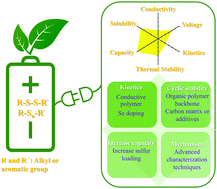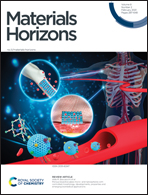Review on organosulfur materials for rechargeable lithium batteries
Abstract
Organic electrode materials have been considered as promising candidates for the next generation rechargeable battery systems due to their high theoretical capacity, versatility, and environmentally friendly nature. Among them, organosulfur compounds have been receiving more attention in conjunction with the development of lithium–sulfur batteries. Usually, organosulfide electrodes can deliver a relatively high theoretical capacity based on reversible breakage and formation of disulfide (S–S) bonds. In this review, we provide an overview of organosulfur materials for rechargeable lithium batteries, including their molecular structural design, structure related electrochemical performance study and electrochemical performance optimization. In addition, recent progress of advanced characterization techniques for investigation of the structure and lithium storage mechanism of organosulfur electrodes are elaborated. To further understand the perspective application, the additive effect of organosulfur compounds for lithium metal anodes, sulfur cathodes and high voltage inorganic cathode materials are reviewed with typical examples. Finally, some remaining challenges and perspectives of the organosulfur compounds as lithium battery components are also discussed. This review is intended to serve as general guidance for researchers to facilitate the development of organosulfur compounds.

- This article is part of the themed collections: Materials Horizons 10th anniversary regional spotlight collection: The Americas and Recent Review Articles


 Please wait while we load your content...
Please wait while we load your content...
